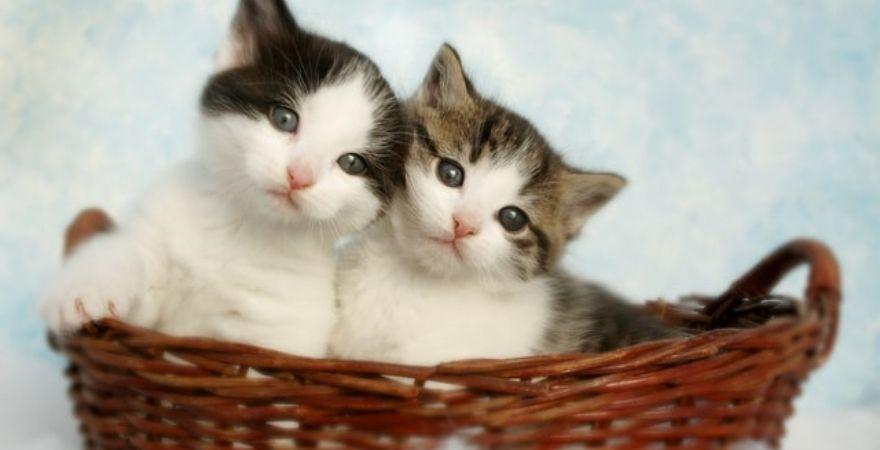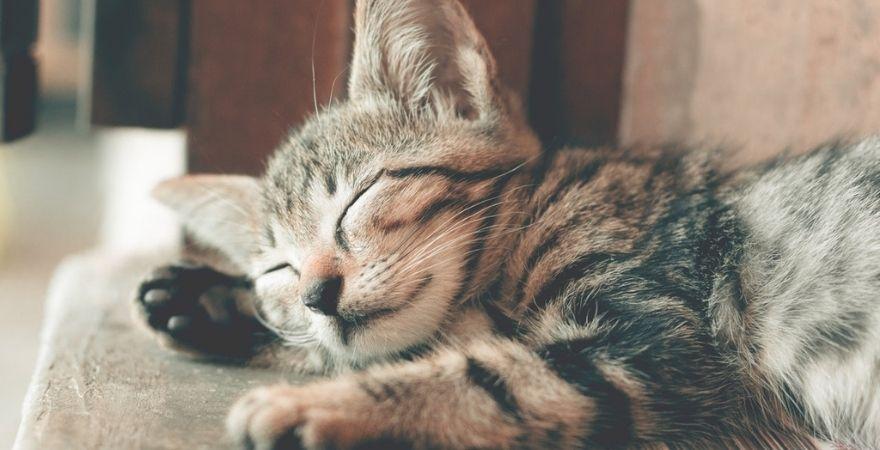At a glance
Feline hyperthyroidism occurs when there is an excessive amount of thyroid hormone in the body. This causes a range of signs including rapid weight loss and an excessive appetite.
- Symptoms of hyperthyroidism in cats include vomiting, diarrhea, weight loss, and insatiable hunger. These signs aren’t specific to hyperthyroidism, which is why a definitive diagnosis is needed
- Thyroid disease in cats is easily diagnosed with specific blood tests.
- There is a range of treatments available for feline hyperthyroidism. These include oral medicine, aural creams, diets, and surgery.
Hyperthyroidism in cats is a very common diagnosis. In fact, it is the most common hormonal disorder of the senior cat. A large amount of thyroid hormone speeds up the metabolism and wreaks havoc on the affected cat.
The symptoms of hyperthyroidism in cats are not easily missed and most owners will bring their cats for a check-up as they know something is amiss. There are several theories as to what may cause this syndrome, and the answer will differ from cat to cat.
Symptoms and signs your cat has hyperthyroidism
Owners should refrain from diagnosing their cat as hyperthyroid online. The signs can mimic other conditions including diabetes and cancer.
The most common symptoms that an owner will notice include:
- Weight loss to the point of being visibly under-weight
- Hyperactivity and excessive vocalization
- Increased hunger
- Chronic vomiting
- Chronic diarrhea
- An increased thirst and urination
- Altered behavior which may be aggressive
Other signs may not be picked up on until the vet examines your kitty, and these can consist of:
- A palpable ‘goiter’ or swelling in the throat
- A rapid heartbeat
- Elevated blood pressure
- A lackluster coat
- Weakness
Signs come on insidiously and may be easily missed initially. Those who have late-stage hyperthyroidism will usually be noticeably underweight and will have a large swelling in their throat. It isn’t unusual for them to have additional signs including a heart murmur and retinal detachment.
The Main Causes
The first thing most owners want to know is ‘what causes hyperthyroidism in cats?’. For the vast majority, it is a benign growth (an adenoma) of the thyroid gland. Less commonly, the tumor is a cancerous adenocarcinoma. This is the case in only 1-2% of our feline patients.
The tumor leads to a spike in thyroid hormone production which has a range of effects on the body. To put it briefly, the metabolism goes into overdrive and the body’s ‘engine’ is running at full speed 24/7.
Why this happens is open to debate. Some experts believe it may be related to a cat’s diet or to something in their environment. Without a conclusive cause, it is impossible to advise owners on how to prevent hyperthyroidism in cats.
Diagnosis
The first step in making a diagnosis is to have your cat checked over by a vet and to discuss all of the recent signs you have been noticing. If concerned, the cat will run a general blood profile including a thyroid screen. A positive diagnosis is confirmed when the thyroid level is above a certain threshold.
For some cats, the vet will suspect a diagnosis of hyperthyroidism but their thyroid hormone is not elevated. This can occur when a cat is very unwell and, in these cases, additional blood screening may be needed to confirm the suspected diagnosis.
The treatment of Hyperthyroidism in cats
Thyroid disease in cats, thankfully, has a number of treatments. For most, it can be successfully managed and cats can live a close to normal life.
- Medicine which is given daily. This can be a tablet, liquid, or cream which is applied to the ear. The aural cream is a relatively novel option and it is an effective selection for those who will not take medicine orally.
- An iodine-restricted diet. This is a prescription diet that must be fed in the absence of any other food or treats. Hills Y/D is the most commonly used.
- Surgery. The affected gland is physically removed while the cat is under general anesthetic.
- Radioactive iodine therapy. The abnormal tissue is destroyed by the local radiation. The vet will administer a radioactive injection within a hospital setting. Most primary vets cannot offer this and it requires care from a specialized institution such as a university or referral center. Cats need to stay in the hospital for about 2 weeks after their injection.
For more information, take a look at the comparative table below:
|
|
Prescription Diet |
Daily medicine |
Radioactive Iodine |
Surgery |
|
Success Rate |
Unclear but expected to be good with excellent compliance |
High but the cat is not cured, just controlled |
95% |
>90% |
|
Cost |
Moderate but ongoing |
Moderate but ongoing |
One-off high cost |
One-off high cost |
|
Risk involved |
Minimal |
Minimal, no anesthetic involved |
Moderate, but there is a potential public health risk |
Moderate-High, depending on how stable the patient is. Some patients require a second surgery. |
|
Possible complications |
Unknown effect of long term iodine restriction |
Medicine can cause side effects including stomach upset |
Rarely, re-treatment is needed |
Post-operative complications including hypocalcemia are seen |
|
Downside |
No longer able to offer any ‘tasty’ foods or treats. Would not work in a multi-pet household. |
The need to give medicine daily requires a lot of effort on the owner’s part |
Most vets cannot offer this therapy |
Unstable or very elderly patients wouldn’t be considered as candidates |
Prognosis/Life Expectancy
So, how long can a cat live with thyroid problems? It is not unusual for a cat to live several years after its diagnosis. Considering most diagnoses are made in teenage cats, this makes for good news. Generally, it is not hyperthyroidism that will kill the cat, though many patients will go on to develop heart or kidney disease.
The risk of complications is lower the better the disease is controlled. For those receiving medical therapy, this highlights the importance of routine monitoring. This usually means in-person checkups and blood tests, as well as blood pressure monitoring and urine analysis.
We Recommend these Cats Thyroid Support
Scruffy Paws Thyroid Soothe Drops are a no-brainer when it comes to caring for a hyperthyroid patient. It is important to emphasize that this supplement forms part of a cat’s treatment plan. It should be used in conjunction with the treatments discussed above (rather than in place of them).
Hyperthyroidism in cats can leave a cat feeling run-ragged and energy depleted. This supplement can potentially help to minimize symptoms and to protect a cat’s organs, including their heart and liver. When their overall health is supported, they are less likely to become unwell.
Importantly, especially if your cat has been fractious recently, this odorless liquid is very easy to administer. Drops can be squeezed directly onto food. Phew, one less thing to worry about!
Final Thoughts
While a diagnosis of cat hyperthyroidism in your senior kitty may knock you for six, thyroid disease in cats is relatively easy to manage. There is a range of successful treatment options available. Your vet will discuss with you which therapy makes the most sense for your pet. Alongside the treatment, consider supporting your kitty’s overall health with some daily supplements.
Dr. Linda Simon, BVMS, MRCVS
Veterinary surgeon,Dr. Linda Simon MVB MRCVS is a locum veterinary surgeon who has worked in London for the past 8 years. She graduated top of her class in small animal medicine from UCD, Dublin. She is currently a member of the Royal College of Veterinary Surgeons.




